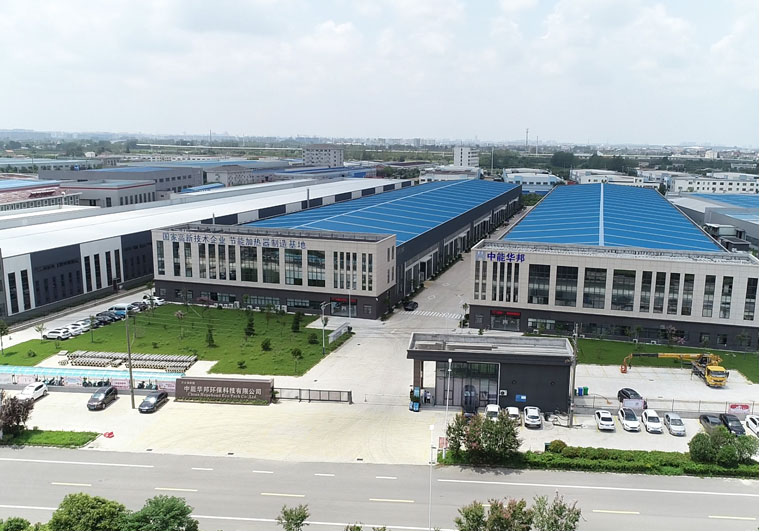Heating Equipment
1. Principle: Based on Seebeck effect, two different metal conductors A and B form a closed loop, and the thermoelectric motive force will be generated when the temperature at both ends is different, so as to calculate the measured temperature.
Structure: It is generally composed of thermal electrode (nickel-chromium-nickel-silicon), insulating sleeve, protective tube and junction box. The measuring end of the thermal electrode is welded to feel the temperature, the insulating sleeve is anti-short circuit, the protective tube is anti-erosion and mechanical damage, and the junction box is used to connect the instrument.
3. Features: Temperature measurement range -200 ℃ to 1300℃, high accuracy, error can be controlled within ±2.2℃ or ±0.75% (take the larger value), good stability, anti-oxidation, fast response, cost-effective.
4. Application: Used for equipment temperature measurement in petrochemical, steel, electric power and other industrial fields; Accurate temperature measurement in scientific experiments; Measuring engine temperature in automobile; Daily household appliances, such as ovens, water heaters, etc. are used for temperature detection and control.
Type K Thermocouple Specifications:
1. Thermal electrode diameter: generally 1.2mm-4.0mm.
2. Index number: K.
3. Measuring range: normal operating temperature is -200 ℃-1300℃.
4. Accuracy level: Generally divided into I and II levels. Class I precision is relatively high, the error range is small; Class II accuracy is slightly lower. There are also accuracy grades according to ±0.5℃, ±1.0℃, ±2.5℃, ±5.0℃, etc.
5. The basic error limit: usually ±0.75% t (t is the measured temperature value of the temperature sensing element).
6. Time constant: thermal inertia level I is 90-180 seconds; The second is 30-90 seconds; Iii is 10-30 seconds; Ⅳ Less than 10 seconds.
7. Nominal pressure: refers to the static external pressure that the protection tube can withstand at the operating temperature without breaking.
8. Minimum insertion depth: it should not be less than 8-10 times the outer diameter of its protective casing (except for special products).
9. Insulation resistance: ambient air temperature is 15-35℃, relative humidity < 80% insulation resistance ≥5 megohm (voltage 100V); Thermocouple with splash-proof junction box, insulation resistance ≥0.5 megohm (voltage 100V) at a relative temperature of 93±3℃.
10. Insulation resistance at high temperature: when the long-term use temperature is ≥600℃, the test temperature is 600℃, and the insulation resistance value is ≥72000Ω; ≥800℃, test temperature 800℃, insulation resistance value ≥ 25,000ω; ≥1000℃, test temperature 1000℃, insulation resistance value ≥5000Ω.
11. Dimensions: Common Φ3×300mm, Φ3×500mm, Φ3×1000mm, Φ3×1500mm, Φ4×300mm and other size combinations.
12. Installation fixed form: fixed thread type, movable flange, fixed flange type, movable flange square form, fixed thread conical protection tube type, etc.
13. Junction box form: splash-proof, waterproof, flameproof, etc
The Advantages and Disadvantages of Type K Thermocouples
1. Wide temperature range: can measure -200 ℃ to 1300℃, after special treatment, the range is wider, suitable for a variety of high temperature and low temperature scenarios.
2. High accuracy: the error is usually within ±2.2 ° C or ±0.75% (take the larger value), which can provide reliable temperature data for most scenarios.
3. Good stability: chemical stability, strong oxidation resistance, stable thermoelectric characteristics, anti-interference, long life.
4. Fast response speed: the thermal electrode has a small heat capacity and can quickly sense temperature changes, which is suitable for scenarios with frequent temperature fluctuations.
5. High cost performance: simple process, reasonable cost, to meet the common temperature measurement needs at the same time the price is close to the people, widely used.
Product Parameter
| Model | Graduation mark | Temperature range | Mounting& Fixing |
| WRN | K | 0-1000°C | 1.without Fixing Device 2.Threaded Connector 3.Movable Flange 4.Fixed Flange 5.Elbow Tube Connection 6.Threaded Cone Connection 7.Straight Tube Connection 8.Fixed Threaded Tube Connection 9.Movable Threaded Tube Connection |
| WRE | E | 0-700°C | |
| WRF | J | 0-600°C | |
| WRC | T | 0-400°C | |
| WRP | S | 0-1600°C | |
| WRQ | R | 0-1600°C | |
| WRR | B | 0-1800°C | |
| WRM | N | 0-1100°C |
Shipment
provides customers with quality and safe transportation.

The world's leading provider of industrial heating and energy solutions, Sinton Group, recently announced that it has successfully implemented a non-invasive el...
READ MORE1. Length of the Tubular Heater: The length of tubular heater plays a significant role in determining the total surface area available for heat emission. Longer...
READ MOREPressure vessels, as indispensable equipment in industrial production, are widely used in fields such as chemical engineering, energy, and pharmaceuticals. As a...
READ MORESheath Material Selection and Thermal ConductivityThe outer sheath of Tubular Heater is critical to heat distribution because it acts as the primary interface...
READ MORERecently, the Yandu District Model Worker and Craftsman Association, in conjunction with the District Federation of Trade Unions' Labor and Economic Affairs Dep...
READ MORE